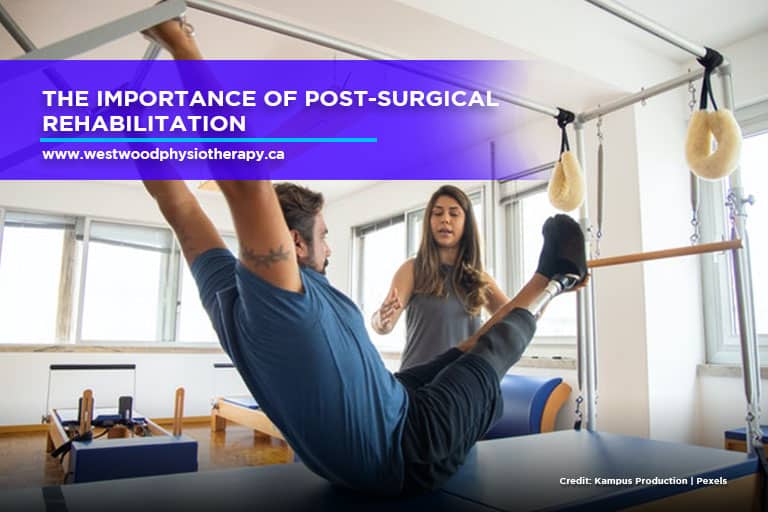The Epley Maneuver Explained: Simple Steps for Vertigo Relief
Dealing with vertigo can be a distressing experience. It feels like the world is spinning around you, leaving you off balance. The Epley Maneuver is a simple and effective method to help relieve symptoms of this condition.
You can perform the Epley Maneuver at home to manage vertigo caused by benign paroxysmal positional vertigo (BPPV). This technique involves a series of head and body movements designed to move particles in the inner ear that trigger dizziness.
Understanding this maneuver for vertigo method can give you more control over your vertigo episodes. By following the steps carefully, you can find relief and reduce occurrences of dizzy spells.
Struggling with vertigo? At Westwood Physiotherapy in Guelph and Tavistock, our skilled team can help you in treatments like the Epley Maneuver to help you find relief and regain balance. If you are wondering how to fix vertigo—contact us today to book your appointment and start feeling steady again!
Understanding Vertigo
Vertigo is a sensation where you feel dizzy or that the world around you is spinning. It can happen suddenly and affect your daily activities. Understanding its causes can help with proper treatment and improvement of your symptoms.
What Is Vertigo?
Vertigo is a type of dizziness characterized by a spinning or swaying feeling. You might feel like you are moving when you are actually still. This sensation can cause balance problems and make daily tasks difficult. It is often described as an illusion of movement, your surroundings seeming to rotate or tilt.
Different types of vertigo include peripheral vertigo and central vertigo. Peripheral vertigo is more common and usually related to the inner ear, while central vertigo is linked to the brain. Symptoms of vertigo can include nausea, vomiting, sweating, and difficulty walking.
If you experience symptoms regularly, it might be helpful to seek medical advice. Doctors can recommend exercises, like the Epley Maneuver, or medications to help manage your vertigo.

Causes of Vertigo
Vertigo can be caused by problems in the inner ear or brain. The most typical cause is Benign Paroxysmal Positional Vertigo (BPPV), which occurs when small crystals in your inner ear become dislodged. This affects your balance and creates the sensation of spinning.
Other causes include infections, such as labyrinthitis or vestibular neuritis, which involve inflammation in the inner ear. Meniere’s disease is another possible cause, characterized by episodes of vertigo along with hearing loss and ringing in the ears.
Certain medications, like antibiotics or diuretics, can also lead to vertigo. Migraines and head injuries are additional factors. Identifying the cause is key to finding effective treatment and relief.
The Epley Maneuver
The Epley Maneuver is a simple procedure used to treat benign paroxysmal positional vertigo (BPPV), a condition causing dizziness. This technique involves a series of head movements to move particles in the ear, which can cause vertigo. Following these steps can help reduce symptoms swiftly and effectively.
The Origins of the Epley Maneuver
The Epley Maneuver was developed by Dr. John Epley in the 1980s. It’s designed to help people with BPPV, a condition where tiny calcium particles, called canaliths, become dislodged in the inner ear. These particles can disrupt balance and cause vertigo.
The maneuver itself involves guiding the patient through specific head movements. These movements help to reposition the canaliths, moving them to parts of the ear where they no longer cause dizziness. It typically provides quick relief from vertigo symptoms when performed correctly.
How the Epley Maneuver Works
If you ever wondered how you could get rid of vertigo, the Epley Maneuver might be the answer. In the Epley Maneuver, you are guided through a sequence of four movements. You start sitting up, then lie down with your head turned to one side and hold this position. Afterward, you turn your head to the other side, stay there for a moment, then roll onto the side until you’re facing down.
Each position is held for about 30 seconds. This allows the particles to move away from areas that trigger vertigo. The goal is to guide the canaliths into an area where they can be absorbed by the body. By clearing these particles, the symptoms of vertigo often subside significantly.
Step-by-Step Guide
The Epley Maneuver is a vertigo treatment, specifically for BPPV (Benign Paroxysmal Positional Vertigo). It involves a series of movements designed to reposition debris in the ear. Follow this guide carefully to help alleviate your symptoms.
Preparation
Before starting, make sure you have a safe environment. You might need help from a friend or family member. Sit on a bed with enough room to lie back comfortably. Ensure you have a pillow at hand to support your shoulders when you lay back. Wear comfortable clothing that allows easy movement.
Make sure your head can turn freely without any discomfort. If you feel dizziness during the maneuver, pause and take deep breaths.
The Steps of Epley Maneuver
- Sit upright on your bed. Turn your head 45 degrees toward the affected ear.
- Lie back quickly. Keep your head turned while laying back so your shoulders rest on the pillow. Hold for 30 seconds or until the dizziness stops.
- Turn your head to the opposite side. Keep it at a 45-degree angle and hold for 30 seconds.
- Roll your body onto your side. Your head should face down at a 45-degree angle. Hold for 30 seconds.
- Slowly sit up. Return to the starting position and stay upright for at least a minute.

What to Do After the Maneuver
After completing the maneuver, avoid sudden movements of the head. Elevate your head slightly while sleeping. Consider using a pair of pillows to prop up your head. Try to rest for a few minutes and stay seated. This can prevent any residual vertigo.
If you still feel symptoms after attempting this at home, consult a healthcare provider for further evaluation. Repeat the Epley Maneuver as needed to help reduce vertigo, but not more than three times in a day. Always listen to your body’s responses to avoid overexerting yourself.
Aftercare and Tips
Taking care of yourself after the Epley Maneuver is crucial. It helps ensure the procedure’s success and your comfort. Know key actions to take following the maneuver and when to contact a healthcare professional.
Post-Maneuver Considerations
Once you complete the Epley Maneuver, try to stay still and upright for about 24 hours. This can help the crystals stay in place. Avoid tilting your head far back or to the sides.
Get up slowly in the morning to prevent dizziness. Some people choose to sleep with their heads slightly elevated to reduce symptoms. Using an extra pillow can help with this.
If you’re feeling dizzy or unwell, it’s wise to have someone with you for assistance. Be cautious during activities like driving until vertigo symptoms are significantly reduced.
When to Seek Professional Help
If your vertigo doesn’t improve after using the Epley Maneuver, consider contacting an expert in vestibular or neurological rehabilitation. Continued dizziness might need medical attention or other treatments.
Consult a doctor if you experience new or worsening symptoms, including severe headaches, hearing changes, or vision problems. These could indicate other issues needing attention.
Persistent symptoms that interfere with your daily life are important to address. A professional can evaluate your condition and recommend further treatment options or adjustments to the maneuver. Responding promptly to these signs ensures your health and safety.
Conclusion
The Epley Maneuver is a great way to ease the discomfort of vertigo. It’s simple and can usually be done on your own. Make sure to follow each step carefully to get the best results.
Remember, safety is important. If you’re not sure about something, talk to a healthcare provider. They can help make sure you’re doing the maneuver correctly.
If you want professional guidance, visit us at Westwood Physiotherapy. We have 3 locations across Guelph and Tavistock, ON, where our experts can help you with vertigo.
Getting the right help can make a big difference. You can enjoy a life with less dizziness and more balance. Take the first step towards feeling better and get rid of vertigo today.








